The Cottingley Fairies: An Innocent Hoax
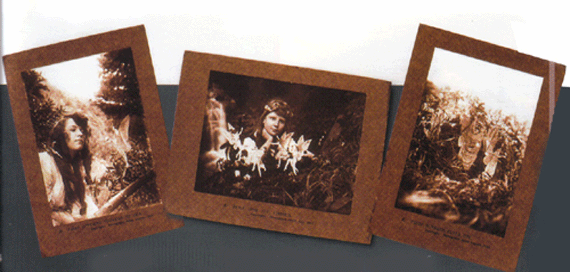
By Matt Callard
How a pair of Yorkshire schoolgirls caused a global commotion and fooled one of the great literary minds of their era…
Today’s masters of the sinister and wrinkle-less world of photo manipulation might look at the famous sepia-tinted pictures from 1917 and wonder how they could possibly have fooled anyone. But it should be remembered that the story of the Cottingley Fairies coincides with the burgeoning Golden Age of cinema, where the impact of early moving images was having a huge, almost spiritual, impact on new film audiences.
It was also a much less cynical and manipulative time in general for both filmmakers and film-goers – an era when audiences more had to suspend their belief, than their disbelief, and when people, surrounded by the horrors of the First World War, felt more of a need to embrace the spiritual and the unknown – and before the dirty fingers of World War II propaganda truly employed the power of film.
Séances, spirit channelling and clairvoyance were common pursuits for a nation entwined in the horrors of the Great War. Indeed, this particular fairy-tale occurred only two years on from another great British hoax, the Angels of Mons – divine interventions that supposedly helped British soldiers win a decisive battle in Belgium – which was, in fact, a groundbreaking piece of moral-boosting war propaganda.
“Childhood imagination”
Elsie Wright was always creative. She’d attended Bradford Arts College since she was 13 and painted landscapes and portraits throughout her life. She also had camera experience, having been employed in a photographic lab during her teens. Her father, Arthur Wright, was an early qualified electrical engineer with access to – rare in those days – photographic equipment and a dark room. She was only 17 when she borrowed her father’s camera (a Butcher Magazine Type Falling ¼ plate camera, to be precise), took her 10-year-old cousin Frances Griffith into the long grass by the beck that ran along the bottom of the cottage where they lived in Cottingley, near Bradford, and took, initially, just one shot of Frances, half-smiling and leaning on a mossy rock – which also just happened to host four playful, leaping fairies.
To assume this was the initial stages of a wicked, publicity-seeking master plan would do disservice to the impish beauty of childhood imagination. The two children would often play for hours, day in-day out, near Cottingley beck, a minute’s walk from their house. When, one day, Frances was asked by her mother and aunt why she spent so much time there, Frances replied, after a moment’s thought, that she “went to see the fairies.”
“Cut them out and stick them up”
The adults’ reactions to the photo appear to have veered from humoured disbelief to outright anger, but one thing is certain; their reactions somewhat upset Frances. Elsie hatched a scheme; not to fool the world, but more to placate her rebuked relatives. In a famous interview for The Mysterious World of Arthur C. Clarke in 1982 Frances, in her gentle Yorkshire accent, said: “Elsie said one night as we were getting ready for bed: ‘I’ve been thinking,’ – she was a real cinema-goer was Elsie, ‘What if I draw some fairies and cut them out in cardboard and we’ll stick them up in the grass. See if uncle and dad will lend the camera and we’ll take a photograph. So if they see them they’ll have to believe us and stop all this joking.'” So that’s exactly what the girls did.
Afterwards, Elsie sat in the dark room with her father as he developed the photograph. As the image slowly revealed itself, Elsie is said to have shouted through the door to her cousin, who was waiting eagerly on the other side: “The fairies are on the plate! The fairies are on the plate!”
“Interest in theosophy”
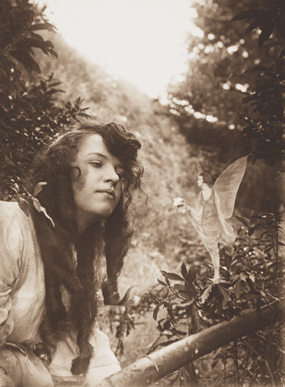 Arthur Wright, being a practical and pragmatic sort of chap, didn’t think a great deal of the picture, preferring to chaste Elsie for – remarkably – poor composition. According to Elsie, his first reaction at seeing one of the most talked-about pictures of the 20th century was: “I’ll tell you what it’s coming up like that picture, it’s very untidy.” The girls’ mothers were slightly more interested, down to a burgeoning interest in theosophy – (a form of philosophical or religious thought based on a mystical insight into the divine nature) very popular at that time – but the matter seems to have been quickly dismissed. When Frances took a second picture several weeks later of Elsie playing with a gnome-like creature, practical Arthur Wright simply refused to lend them the camera again.
Arthur Wright, being a practical and pragmatic sort of chap, didn’t think a great deal of the picture, preferring to chaste Elsie for – remarkably – poor composition. According to Elsie, his first reaction at seeing one of the most talked-about pictures of the 20th century was: “I’ll tell you what it’s coming up like that picture, it’s very untidy.” The girls’ mothers were slightly more interested, down to a burgeoning interest in theosophy – (a form of philosophical or religious thought based on a mystical insight into the divine nature) very popular at that time – but the matter seems to have been quickly dismissed. When Frances took a second picture several weeks later of Elsie playing with a gnome-like creature, practical Arthur Wright simply refused to lend them the camera again.
It could all have ended right there, but for the meddlesome interferences of the adult world. Unbeknown to the girls, two years on from the date the original photo was taken, their mothers’ interest in theosophy had increased and taken them to meetings in Bradford where they had chanced upon a speaker who mentioned fairies. Polly Wright approached the speaker and told him of the pictures, whereupon he persuaded the mother to let members of the Bradford Lodge view the glass negative plates. Through the Lodge, the photographs eventually came to the attention of Edward Gardner, a major player in the theosophical movement and, suddenly, events took an altogether unanticipated turn.
“A single exposure”
Gardner, in the first of a few Machiavellian tinkerings, convinced the girls’ parents to allow them further use of the camera for more pictures. Simultaneously he checks the authenticity of the existing plates with so-called photographic ‘experts’. Possibly, he tampers with the images to ‘bring them out’ a little. The original prints are actually rather blurry and thinly developed. The experts duly return with a statement: ‘This plate is a single exposure. These dancing figures are not made of paper nor of any fabric. They are not painted on a photographed background. But what gets me most is that all these figures have moved during exposure.’
The so-called ‘movement’ of the fairies was, in fact, caused by the wind. Something Elsie explained and demonstrated in 1982: “What we did was (use) a long hat pin that we put down the back like that and stuck the tape at the back (then) we wormed that (the pin) down into the earth. The thing was, they said they could see that the fairies were moving when the photographs were taken. But that’s because we did them in a breeze.”
Gardner, no doubt feverish with the publicity bug, then played his masterstroke and met a certain well-known published author.
“The 5th picture”
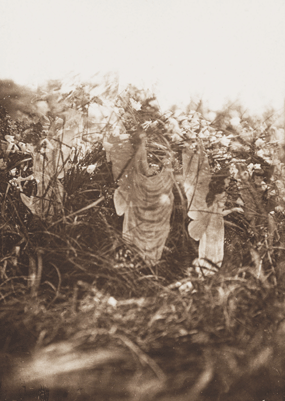 Sir Arthur Conan Doyle was probably Britain’s most eminent literary figure of the day. The fact that he had undergone a spiritualist conversion directly contrary to the set beliefs of his most brilliant creation – a certain Sherlock Holmes – a character who flatly refused belief in the supernatural and dealt only in hard fact, seemed something of an inconvenient irony. Conan Doyle, immediately intrigued by Gardner’s ‘find’ promptly wrote an article for London’s illustrious The Strand magazine. In it he vindicated the photographs’ authenticity. The magazine sold out in days. Soon the story was around the world.
Sir Arthur Conan Doyle was probably Britain’s most eminent literary figure of the day. The fact that he had undergone a spiritualist conversion directly contrary to the set beliefs of his most brilliant creation – a certain Sherlock Holmes – a character who flatly refused belief in the supernatural and dealt only in hard fact, seemed something of an inconvenient irony. Conan Doyle, immediately intrigued by Gardner’s ‘find’ promptly wrote an article for London’s illustrious The Strand magazine. In it he vindicated the photographs’ authenticity. The magazine sold out in days. Soon the story was around the world.
Meanwhile, the girls had been busy. No doubt much to Gardner’s satisfaction they had returned with no less than three new pictures. One showing a fairy offering a posy to Elsie. Another showing a fairy leaping at Frances. And the final, and most intriguing – the so-called ‘5th picture’ – showing a supposed fairy sun-bath. This strange and ethereal picture might just have been the most remarkable piece of luck. It is possibly caused by a double exposure. The image in the centre of the picture shows, to fairy believers anyway, a magnetic bath, apparently woven quickly by the fairies. The creatures use them especially in the autumn following dull weather! Neither of the girls knew about this strange piece of fairy-lore. Frances, despite admitting the hoax on the other four photographs, went to her death bed insisting on this photograph’s providence and that she had really seen fairies.
“Physical octave”
The furore died down, naturally, and the west got on with the jazz age and its impending loss of innocence. Sceptics eventually buried the story. Truth magazine probably saying it best: ‘For the true explanation of these fairy photographs what is wanted is not a knowledge of occult phenomena but a knowledge of children.’ An aged Arthur Conan Doyle never really recovered his stature. But he was never anything less than a man of great integrity. Elsie later confessed to a frisson of shame that the true intention of the pictures had eluded such an esteemed figure: “It was very embarrassing because there’s two village kids and a brilliant man like Conan Doyle. Well, we could only just keep quiet!”
Gardner reaped his rewards on the theosophy circuit, later publishing a book, Fairies: The Cottingley Photographs and Their Sequel. He never softened his stance on the photographs’ authenticity – hardened it, if anything. He wrote in his 1945 book: ‘Within our physical octave there are degrees of density that elude ordinary vision. Thus, faeries are small because they adapt themselves to our ideas… Sometimes they assume the shape of diminutive human beings, half-visible, and perhaps are stimulated to appear so by human thought processes, desires, and expectations.’ Maybe he was a little too concerned with Conan Doyle’s contemporary, JM Barrie, author of Peter Pan. He once wrote: ‘Everytime someone says ‘I don’t believe in fairies’ there’s a little fairy somewhere that falls down dead.’
“Keep a secret”
And the girls, well, they got on with life. They married, had children. Elsie emigrated for a while and returned. In the early seventies interest re-surfaced. An interview with Nationwide in 1971 saw the ladies in impeccably mischievous form. When the interviewer asks: “Are they trick photographs?” Elsie replies: “I’d rather leave that open if you don’t mind.” Then later, after being asked: “Have you had your fun with the world for 50-years?” Elsie laughs a little, then gently says: “I think we’ll close on that if you don’t mind.”
Five years later the sparky elderlies brush off a needlessly combative Austin Mitchell. The journalist, for Yorkshire Television, demands to know if they fabricated the photographs. “Of course not,” says Frances. “You tell us how she could do it? Remember she was 16 and I was 10. So then, as a child of 10, can you go through life and keep a secret?” Mitchell gets nothing from them and, frankly, it’s all he deserves.
“Wanted to believe”
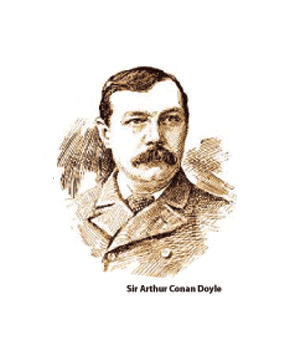 The eighties confession interviews explained how the girls had cut out images from fairytale books. They then suspend the paper figures on long hat pins sunk into the earth. It was never going to be rocket science. It was only ever, at worst, a childish bit of mischief – until the adults became involved, of course. Frances told the magazine The Unexplained: “I never thought of it being a fraud. It was just Elsie and I having a bit of fun. I can’t understand it to this day why people were taken in – people wanted to be taken in. People often say to me: ‘Don’t you feel ashamed that you’ve made all these poor people look fools? They believed in you.’ But I don’t, because they wanted to believe. We didn’t have to tell a lie about it at all because always someone came out to justify it.”
The eighties confession interviews explained how the girls had cut out images from fairytale books. They then suspend the paper figures on long hat pins sunk into the earth. It was never going to be rocket science. It was only ever, at worst, a childish bit of mischief – until the adults became involved, of course. Frances told the magazine The Unexplained: “I never thought of it being a fraud. It was just Elsie and I having a bit of fun. I can’t understand it to this day why people were taken in – people wanted to be taken in. People often say to me: ‘Don’t you feel ashamed that you’ve made all these poor people look fools? They believed in you.’ But I don’t, because they wanted to believe. We didn’t have to tell a lie about it at all because always someone came out to justify it.”
Elsie and Frances died two years apart in 1986 and 1988.
Hollywood descended on Cottingley for a 1997 film starring, rather incongruously, Harvey Keitel. There are still, despite the confessions, plenty of believers still out there. Including modern-day theosophists and those inevitable conspiracy theorists who believe the confessions are fake. They’re all right there on YouTube should you care to look. A nineties auction of the original glass negatives sold for £6,000.
Yes, for certain, the fairytale lives on.
So, if on certain sunlight-dappled days you come upon a small stream with the sunlight glinting through the leaves and with dandelion florets dancing and reflecting across the water, spare a thought for the wide eyes of childhood and how they, just might, see things a little bit differently.
Modern Opinion
The University of Huddersfield’s Dr Merrick Burrow has contributed new reflections on the enduring global interest in the Cottingley Fairies, the Yorkshire-based hoax that fooled the world over a century ago.
Dr Burrow, Subject Leader in English and History at the University of Huddersfield, has years of experience in researching and writing about the events and his recent contributions to the US-based Criminal podcast and Japan’s top-selling daily newspaper Mainichi reflect the ongoing fascination in the hoax.
It is the Conan Doyle connection, and the furore around his conviction that the fairies were real that Dr Burrow believes still resonates strongly in how opinions are shared in today’s social media environment.
“There are lots of ways in which the story remains interesting,” says Dr Burrow. “There are so many layers to it, but the Conan Doyle connection is still gripping, with the strangeness of the creator of Sherlock Holmes endorsing these photographs.
“The idea that two young kids from a rural backwater pulled the wool over Conan Doyle’s eyes, that there was a sophisticated hoax masterminded by these two children is intriguing and fascinating.
“I feel that there are parallels with social media bubbles,” Dr Burrow continues. “By the time Conan Doyle knew of the photos, he had been involved in hostile polemical debates with rationalists who argued against the paranormal and spiritualism, which he believed in.
“He found people were hard against him, so he became entrenched and strategic. He thought in terms of campaigns to beat his enemies rather than ‘what’s the truth here?’ He only listened to the bits that confirmed what he thought, and not to moderating voices he thought were too cautious.
“He closed off connections to people he felt were against him, so there is all this confirmation bias – and the people he asks for opinions are all spiritualists. It is like the echo chamber of social media bubbles today, where people’s opinions become more extreme and more amplified.”
“Minor deceptions”
Dr Burrow was guest curator of an exhibition on the Cottingley Fairies at the Treasures of the Brotherton Collection at the University of Leeds, which ran from 2020 to 2022. The Criminal Podcast team visited the Brotherton to view the artefacts of the hoax that still survive, as well as meet Dr Burrow. But his expertise has also been called upon by the Mainichi, Japan’s leading daily newspaper, due to ongoing interest in Conan Doyle as well as the idea of nature spirits in Japan.
“Conan Doyle was popular in Japan as his Sherlock Holmes stories were some of the first English-language works to be translated into Japanese after the country opened up to the West,” adds Dr Burrow.
“The Japanese belief in nature spirits ties in with Shintoism, and the Utsunomiya Fairy Museum has a suitcase of memorabilia from Edward L Gardener, who initially passed on information about the Cottingley Fairies to Conan Doyle.”
But the hoax perpetrated by Elsie and Frances still resonates today, despite its wider public impact on the public being mostly unintentional – unlike modern hoaxes like Channel 4’s recent ‘British Miracle Meat ’ programme.
“I characterise it as ‘an accidental hoax’, one with multiple participants, none of whom understood or fully controlled what was going on,” adds Dr Burrow, who is currently writing a book that assesses the interplay between deception and enlightenment and how modern technologies that inspire scientific wonder have also given rise to powerful forms of irrational enchantment.
“The girls took the photographs to get one over on their parents, by offering empirical ‘proof’ of the fairies they claimed to have seen. Of course, people had been telling stories about fairies for centuries. But it’s the addition of photographic technology that is the key to the hoax.
“Conan Doyle was too busy with an impending lecture tour about spiritualism in Australia to devote time to investigating the photographs personally. So he handed over responsibility for evaluating the evidence to Gardener. Conan Doyle never met the girls or handled the original negatives, though he wrote about them as if he had. And he was the public face of the story, which gave the hoax a global reach.
“It is a conspiracy in which nobody was fully aware of the minor deceptions of everyone else involved. Certainly, none of them intended for it to become the hoax that it became. It was an accidental conspiracy that became an enduring global phenomenon.”
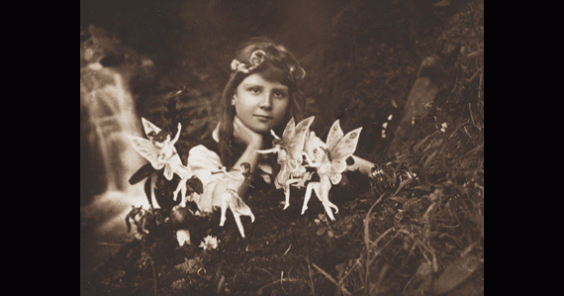
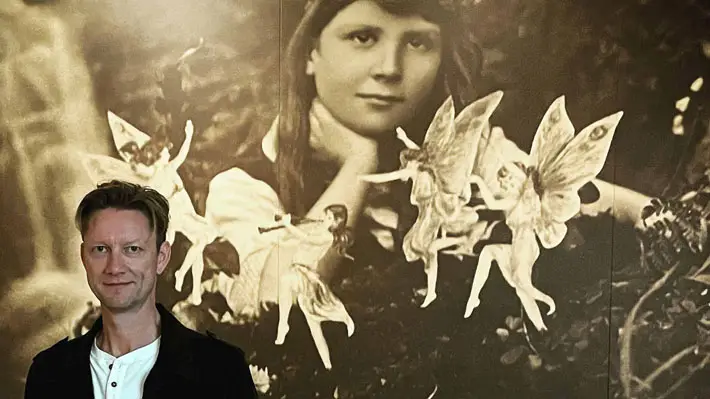
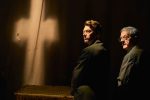
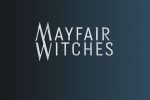

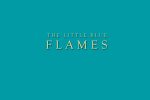


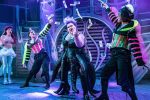
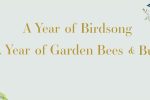


AN INNOCENT HOAX? The mystery of The Cottingley Fairies revisited … http://t.co/fcR3DpfEEm #yorkshire
I am the daughter of Frances Griffiths who died on July 10th 1986 in Belfast NI where I live. Frances left an autobiography dealing with her life in South Africa, her return to england and living with her Aunt Polly Wright and family, what happened when she went to play in the beck while elsie was working as a `spotter’ in a photographic studio, her seeing faires (Elsie never did) the hoax that turned sour and the 3 1920 photos – 4 of which were hoaxes and the fifth – a photograph of the fairies she used to see on a day to day basis in 1917 and 1918.. Frances took this extraordinary fphoto of real fiaries by chance – Elsie had o more faked ones left. Until she died she maintained this was genuine.
her autobiography is call `Reflections on the Cottingley Fairies by Frances Griffiths with additional material by her daughter Christine.. Published in June 2009.
web site: Cottingleyfairies.com.
unfortunately her book has been stolen. Pirated copies are on sale for as much as $400 in the USA
My site sells the book at £8.99 plus postage. Please contact me if you would like any more information. Christine Lynch
Un